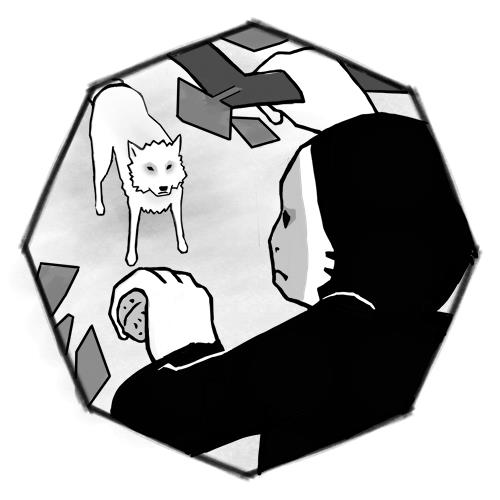Nathan Loewen:
Welcome to our podcast series from the Global Critical Philosophy of Religion Project. This project aims to rethink the philosophy of religion from the ground up with an entirely new set of categories and questions. As you may imagine, this is no small task. The interview series on teaching is created by Nathan Loewen. The interviews are supported by a grant from the Wabash Center. All of the podcasts you find here on the Global Critical Philosophy of Religion are hosted by Study Religion, a production of the Department of Religious Studies at the University of Alabama.
Nathan Loewen:
How might philosophy of religion be taught and studied in the 21st century? Gereon Kopf is a professor of East Asian Religions and Philosophy of Religion at Luther College. Dr. Kopf is currently developing a multi-entry philosophy, as well as a non-essentialist philosophy of mind and identity formation. He is also the principal investigator of a Wabash Center grant to develop strategies for teaching philosophy of religion inclusively to diverse students.
Nathan Loewen:
This podcast series was created by support from Dr. Kopf’s grant. In our conversation, I asked what is the multi-entry approach and how does it influence teaching the philosophy of religion.
Nathan Loewen:
Professor Kopf, you have talked about something called a multi-entry approach. In fact, you have some forthcoming publications with that in the title. What is the multi-entry approach?
Professor Kopf:
The multi-entry approach developed in the context of a seminar at the American Academy of Religion. It was a five year seminar called Global Critical Philosophy of Religion that combined many scholars from working in the different traditions, trained in a variety of methodology. One of the products is the forthcoming textbook by Timothy Knepper, Philosophy of Religion, A Global Critical Approach. Another product is my co-edited volume, co-edited with Professor Purushottama Bilimoria, utilizing the approaches I developed, the so-called multi-entry approach.
Nathan Loewen:
Okay. You say that you were committed to globalizing philosophy in order to have more voices engaging in the philosophical discourse. How does the multi-entry approach do that?
Professor Kopf:
It does it in three different ways. Up to, let’s say, roughly the ’80s of the last century, the way philosophy of religion was taught at the academia was mostly Christocentric and Eurocentric, including obviously the adaptation of European thought in North America. But in the ’80s, then people started including sources from multiple traditions. That’s what I would call actually a globalizing approach. It’s to still take the same framework, the same question, the tri philosophy of religion, but now look for answers in a variety of text sources all over the world.
Nathan Loewen:
Where do the multiple entries come from?
Professor Kopf:
The globalizing approach is still a single entry approach because it is one narrative. It is one structure. In response to that we have post-colonial approaches that critique that globalizing approach and said we need to engage not only different texts, but also methodologies from different traditions.
Professor Kopf:
The approach that I am suggesting, the multi-entry approach, is a middle path between the globalizing and the decolonizing approaches. That’s what I sometimes also call the cosmopolitan approach. The multiple entries are actually different narratives on how to do philosophy of religion. Theoretically, they come from multiple methodologies, but also from multiple traditions from multiple cultural contexts all over the world.
Nathan Loewen:
How do you get these multiple entries to interact with each other?
Professor Kopf:
That is then again, an echo of the globalizing approach. The echo of the decolonizing approach is to have the multiple voices from multiple context. I would like to avoid the idea of having one master narrative. Each approach in the text in the book, each chapter, but in a conversation… Each approach formulates its own approach in response to a set of questions which are formulated extremely general. What is your methodology? What is your approach? What is your historical context? What is your terminology of how to envision what in English we call philosophy of religion?
Nathan Loewen:
Has it worked?
Professor Kopf:
We had a workshop last year in August. We are now working on editing our book. It seems to work. What makes it interesting is that you not only have those multiple entries, and then people stay separate, that in a second step, theoretically all approaches engage each other. That means that if you have, for example, a monotheistic approach, then what has been done in the past will engage for example, a Europa approach on its terms. But at the same time, you have a Europa approach developed within that cultural, philosophical context engaging, for example, Christian monotheism on its own terms. You have a multi log then if you have multiple partner, a multi log of different narratives, different approaches, engaging each other.
Nathan Loewen:
And so you are a professor in the Department of Religion at Luther College.
Professor Kopf:
Yes.
Nathan Loewen:
And you do teach mostly undergraduate courses. Do you teach courses on philosophy of religion?
Professor Kopf:
I have one course on philosophy of religion that is called Godself and the afterlife.
Nathan Loewen:
Okay. And do you use this multi-entry approach with your students?
Professor Kopf:
I’ve been starting to use it. So the practical issue is that if we teach the traditional way, you have one professor writing one syllabus using a couple of selected textbooks, hopefully anthologies. You still have a major narrative, the syllabus provides or major narrative. The way I try to break it is very explicitly to have multiple speakers come in from different tradition and engaging the students on their terms.
Professor Kopf:
A second way of doing that is actually in not having one outline, even though, obviously there’s a course of the semester that starts at the beginning, has a midterm and then a final, but actually within the semester have multiple breaks where we start from scratch again. Looking at a different issue, looking at a different methodology, looking from a different tradition. And in all those and in every section itself, we also have multiple texts engaging each other.
Professor Kopf:
So if you, for example, look at the cosmos, we first have a more Eurocentric approach looking at visions of ultimate reality in theistic language. Then we are looking at the cosmos as developed from different tradition, but using the language developed in India, in the Indian Darshanas, in the Indian rational ways of engaging the absolute. So we’re actually then using in class different languages to work on the same issue.
Nathan Loewen:
And so I know that we don’t have any students in this interview, but how do the students respond? Maybe even more interestingly, what sorts of outcomes or assignments do the students produce?
Professor Kopf:
There are a couple of different outcomes the students produce. There’s the traditional response paper where students respond to a given text. There are debates where in class they have different either standpoints from different traditions, or different philosophical positions or different methods engaging each other. And then there is a final project that’s hopefully open enough that people, students, are flexible to embrace the position they encountered in class they find most intriguing. So, that is in terms of student outcomes. The responses have been mostly positive and students cherish actually engaging traditions and positions in methodologies they haven’t heard about at all before the class.
Nathan Loewen:
What is the composition of your courses? Are your students taking this as a humanities credit? Are they taking it as philosophy students? Where do the students in your classroom come from?
Professor Kopf:
Most of the students in my class taking it for to satisfy a general education religion requirement. Then we have students who are philosophy majors. Then we have students who are religion majors. So that’s in that class, the basic demographics in terms of curriculum.
Nathan Loewen:
And I’m interested to know what happens after the students take your course. Do you hear from them again?
Professor Kopf:
The majority disappear back into the student body, but then there are students that engage. Some of them come back and say, “I really liked…” Actually I just talked to one student who really liked a book that I used to augment Tim Knepper’s book, it’s Carl Becker talking about near death experience and using them to develop a new philosophy of science. Talking about criteria, epistemic criteria for how to talk about near death and afterlife phenomena.
Professor Kopf:
And so that student came up to me and said it’s very exciting. She’s a neuroscience student. She wants to now do an independent study on looking at neuroscience and philosophy of mind approaches to those phenomena like near death experience, all the state of consciousness and so forth. So there are those students who then come for upper level work at Luther College, mostly in independent studies because most of our courses are, at least in our department, the Religion Department, very much on a general education level.
Nathan Loewen:
I’ll ask three more questions or perhaps only two more. Who do you want to read or learn about the multi-entry approach?
Professor Kopf:
Ideally speaking, everyone. But obviously there are different audiences and that’s why I’ve been packaging it. My essay that I wrote for this amazing forthcoming book on philosophy of religion around the world, global critical approaches, to our critical approaches. And so I’m packaging that for a multiple audience, because I think there are multiple people can use it in different ways.
Professor Kopf:
Firstly, obviously there’s an academic audience. I would like people who teach philosophy of religion in an academic setting to expand their horizon by actually engaging and hopefully working through on multiplicity approaches. And not only study for example, to stay with my early example, Yoruba philosophy from a Christian perspective or from a religious studies perspective, which is still an outside perspective, right? Or Yoruba perspective, but also then reverse the gaze and then look at religious studies methods from a Yoruba perspective or at Christian theology from a Europa perspective.
Professor Kopf:
So that’s my first audience. My second audience is to apply that for people who struggle with diversity, cultural diversity, philosophical diversity, ideological diversity, or religious diversity to give a tool that allows us to engage various traditions without having to deny ours. But also without the temptation of superimposing our few and others or juxtaposing saying East/West, I think that binary doesn’t work at all creating those counterfactual binaries and in order to safeguard one’s own position tradition methodology.
Professor Kopf:
So those are the two main audience. And I also am working on increasing and largening the perspective to have a multidisciplinary conversation in there to include, for example, neuroscientists, philosophers, and various disciplines at the same table. Again, in such a way that we don’t super superimpose our methodologies, that don’t we exclude other methodologies, but it’s more an inclusive engagement.
Nathan Loewen:
Who do you think won’t read your book or won’t adopt the multi-entry approach? Who do you think will not adopt the multi-entry approach?
Professor Kopf:
I think that there are two possible candidates who may reject the multi-entry approach. (Laughs). The first one is people who think that, who are content with their methodology, with their position and do not feel the need of engaging others. And also, and I don’t want this to come across the wrong way, I don’t want to use the word laziness, but generally the academics are really stressed out. We have a lot of things going on for the people who are not in academics. It’s not only teaching, it’s research, it’s committee works, it’s administrative work. And after for example, teaching a course for 20 years to actually step back and say, “Now I embrace a completely new approach,” takes a lot of work and time and also emotional investment. So, I understand if people say, “It has worked for 20 years, so it’s a practical being contentedness with my approach. It has worked for 20 years. I don’t see the need to expand.”
Nathan Loewen:
Are there any resources out there for those time-strapped busy instructors and professors of philosophy or religious studies? Are there opportunities for people to engage with others on the multi-entry approach? How might we overcome some of those barriers, and entertain this proposal that you’re making?
Professor Kopf:
So overall, the larger group that are in the Global Critical Philosophy of Religion group is working on a series of publications. So you have Tim Knepper’s next book, you have (Purushottama) Bilimoria’s and mine edited volume as a teaching manual on the multi-entry approach. We’re having other works in the process of being in varied stages of the publication process that provide a larger background. Our website provides a network of experts, so that it makes it easier to say, “I don’t know about that tradition. I don’t know about that methodology,” but now since we’re all used to Zoom, it’s easier to invite people.
Professor Kopf:
And so it’s an ongoing work and process of expanding resources, and all also one thing that our group is talking about is making more translation available so that you don’t need to be an expert in 10, 20 languages to teach that kind of approach. But again, I think the multi-entry approach is a multi-participant approach. So that’s why I think that the network of experts is extremely important. That we can call on people and say, “Hey, would you through Zoom, come to my class and talk about that tradition or that position or that methodology that I’m not as familiar with.”
Nathan Loewen:
Okay. Well, thanks for your time, so much, Dr. Gereon Kopf for joining us all the way from Decorah, Iowa, at Luther College. We look forward to your future publications and hearing more from you about the multi-entry approach.
Professor Kopf:
Thank you very much for your invitation and for our conversation.
Nathan Loewen:
Thanks for listening. For more information about the Global Critical Philosophy of Religion Project, please visit our website at GlobalCritical.as.ua.edu. There, you will find our participating scholars, publications, sponsors, projects, and contact information. Study Religion is a production of the Department of Religious Studies at the University of Alabama.
Nathan Loewen:
For more information about our department, please visit the website at religion.ua.edu, or you can search for our department on Twitter, Instagram, Vimeo, Facebook, SoundCloud, Apple podcasts, or Spotify podcasts. Thanks, goodbye.












